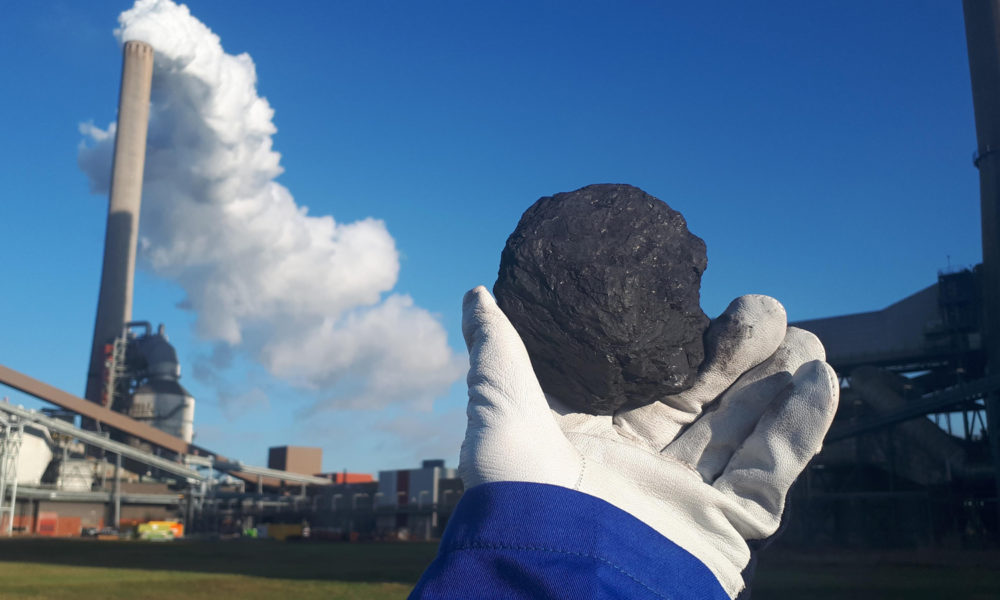This is the first in a two-part series.
Pretty much everyone around the globe has been affected by COVID-19. We’ve all had our lives turned upside-down by the unprecedented response to the pandemic. As of this writing, about 316 million Americans are subject to “stay at home” orders. By the time this thing is over, we’re all likely to have known someone who died of the disease. And while New York City is currently the epicenter of the crisis, it’s clear that the virus is about to overwhelm large swaths of rural America.
Before COVID-19 was dominating the news and our lives, I was doing research into what Congress should do to ensure that coal workers and coal communities have a fighting chance to be a part of the low-carbon economy. But the policy landscape has changed in just a few weeks. In the last five weeks, 26 million people have filed for unemployment, which shattered previous records, and projections (that notably don’t account for the recent stimulus package) suggest unemployment could reach 32 percent, higher than during the Great Depression. Attention has turned—rightly so—to the pandemic, first responding to critical needs of front-line workers and next to economic recovery.
Frontline and essential workers must be protected from contracting and spreading the virus
Much has been written about the need for personal protective equipment (PPE) for health care workers and frontline workers like cleaners, grocery store employees, and delivery people. It’s worth emphasizing that this is still something we should be focused on—we must protect these workers from getting sick in order to continue to provide crucial services for everyone.
But we must be more deliberate about other workers who have also been deemed essential, like energy workers. For example, coal miners and power plant operators have continued to work during the pandemic, even though physical distancing is difficult in the close quarters that these workers experience. The Mine Safety and Health Administration should issue a temporary emergency standard to protect coal miners from the virus, instead of the weak guidance it has so far offered, and the Occupational Safety and Health Administration should do the same for all frontline and essential workers.
So, job number 1 is saving lives and keeping our heroes safe. But in the coming weeks and months, policymakers will appropriately turn toward reopening the economy and driving long-term economic recovery. Why should they think specifically about coal communities and coal workers?
The coal industry may not recover from the pandemic
It’s no secret that coal is in structural decline. The chart below from the Energy Information Administration shows the steep decline in coal-fired electricity generation since 2010 that coincides with a steady rise in natural gas-fired generation and renewable energy.

Source: Energy Information Administration, Monthly Energy Review.
Natural gas prices have remained at historic lows for much of the past decade because of the boom in hydraulic fracturing. Electricity demand has remained flat for over much of the same period. The cost of renewable energy like wind and solar has plummeted, and that trend is set to continue. More than 100 GW of coal-fired generation capacity went offline in the 2010s as many of these generators were older and uneconomic relative to gas (and to an increasing degree, renewables), and many were heavily polluting and not worth investing in emission control equipment to reduce public health impacts. And as the next chart shows, EIA projects that renewable generation will surpass both coal and nuclear by 2021.

That was before the pandemic.
The ongoing crisis could speed up what has already been a slow-moving train wreck for the coal industry.
EIA is now projecting that the pandemic will drive total electricity demand to fall by 3 percent in 2020—but with a 20 percent decline in coal generation over last year. Thanks to a warmer winter than usual, as of the end of January, almost 84 percent of coal-fired generating capacity had enough coal stockpiled on site to run for more than 60 days. As less coal is burned to produce electricity, more piles up at the plants, putting pressure on mines to reduce production. In that same report, EIA also projects a 22 percent decline in coal production in 2020 compared to 2019.
These trends are already having an impact. Some producers are idling operations and declaring bankruptcy. At the end of March, bankrupt Murray Energy, the nation’s 4th largest coal producer, requested that a bankruptcy court waive its required payments for retiree medical costs of about $6 million per month because the company is on the verge of liquidation, after it failed to receive a single bid for its assets during bankruptcy proceedings. According to its website, Murray employs almost 7,000 people and operates 17 active coal mines. At least some of these mines could continue to operate even if the company is liquidated.
Because the economic position of coal relative to cleaner forms of energy is challenging and shows no sign of changing, coal mining companies are having trouble accessing capital and financing debt. As Murray is showing, this is now true even in bankruptcy. Even if gas prices rise later this year (as projected), coal mining companies may be too battered following a decade of decline and a pandemic to take advantage.
To be clear: this is absolutely not an argument for bailing out coal companies. The administration has tried repeatedly over the last three years to save the coal industry, and it has not reversed the decline. The pandemic is amplifying the structural headwinds facing the coal industry, and policymakers simply can’t change that with bailouts.
More importantly, coal mining companies are generally bad corporate citizens. The National Mining Association is pleading with Congress and the administration to allow companies to weasel their way out of statutory requirements to provide health benefits for the workers who made their executives rich and to clean up the mess left behind from coal mining. Market dynamics do not favor the industry, which is why they are desperate to get out of taxes that support retirees and environmental cleanup.
The lost coal jobs will have an outsized impact on the communities they support
Policymakers must draw a clear distinction between the coal industry and the workers and communities that the coal industry supports. Coal miners, plant operators, and their communities will continue to need support and resources long after the pandemic fades.
As the coal industry continues its downward spiral, the communities that depend on coal for their economic livelihoods will have a tremendously difficult time recovering economically. For these places, where a coal-fired power plant or a coal mine is often the only major employer, extended unemployment benefits are a critical first step in responding to the economic crisis but are merely a band-aid on the longer-term economic outlook, both for individual workers and for their larger communities and regions. In 2019, approximately 90,000 people worked at coal mines and coal-fired power plants—jobs that pay family-sustaining wages and offer good benefits. These mines and power plants can be found in about 500 of the nation’s 3,142 counties, and many of the counties are rural and offer limited alternatives for dislocated workers.

Counties that produced coal in 2018 shown in orange (darker means more coal produced). Currently operating coal plants are shown with larger sizes indicating greater operating capacity in MW.
As the economy reopens gradually, the economic fallout from the pandemic could persist for many months. But the loss of coal jobs will continue to reverberate through many of these communities for years to come.
Coal communities will struggle to recover without additional support
The reality is that many of these communities, particularly those in Appalachia and on tribal lands, have been struggling for generations. Pulling these places out of poverty has proven to be exceedingly difficult, to say the least. Beginning with President Johnson’s War on Poverty in the 1960s, 50 years of government support has helped people and communities materially, but much more remains to be done. The demise of coal makes this job even more difficult—and underscores for policymakers the need to keep these communities in mind in crafting recovery packages.
Rural health care is collapsing, and the effects of this will be painful as the virus reaches those areas. The hospital where I was born closed its doors in mid-March, unbelievably, in the midst of the current pandemic. While some of us in cities can often work remotely and can see our health care providers via video conferencing, many folks living in rural communities do not have access to broadband that makes this possible. This became painfully obvious to me, sitting in DC with my 200 megabyte-per-second internet speeds, helping my mom troubleshoot her internet connection so that she could upload video lessons for her first-grade class. We were finally able to upgrade her connection from a lousy 1 megabyte per second to a whopping 9… and she lives barely a few miles outside of Charleston, West Virginia’s capital and largest city. And there are counties in central Appalachia that struggle to provide residents with clean water, relying on a shrinking base of customers to support those needed investments. Martin County, Kentucky, for example, loses up to 70 percent of clean, treated water because the pipes leak so badly. (Read that last sentence again; it is not a typo.)
Infrastructure needs in rural America are substantial and must be prioritized to enable long term economic recovery.
Let’s focus on workers and communities—no corporate bailouts
As someone from a third-generation coal mining family, I know well that the answer to the question, Is coal good or bad? is really, It’s complicated. But it is long past time for us to recognize, especially in Coal Country, that our future will not be like our past. Bailing out coal companies and providing golden parachutes for coal executives will not rescue the industry in the long term. These desperate times call for real solutions that benefit real people who live in real communities across the country.
Many organizations, advocates, and activists are fighting for an economic recovery that is just and equitable, and also clean and sustainable. The transition to a more sustainable economy will only worsen the economic landscape for coal, and we have a responsibility to ensure that these workers and communities are not left behind. My next post will explore how policymakers can begin to do just that.

